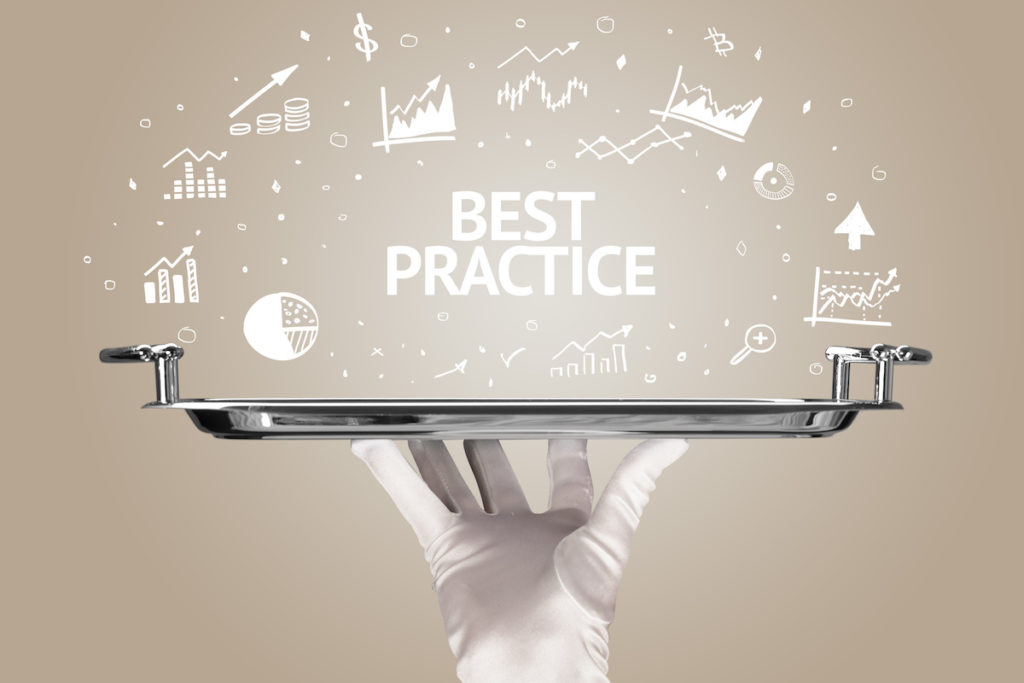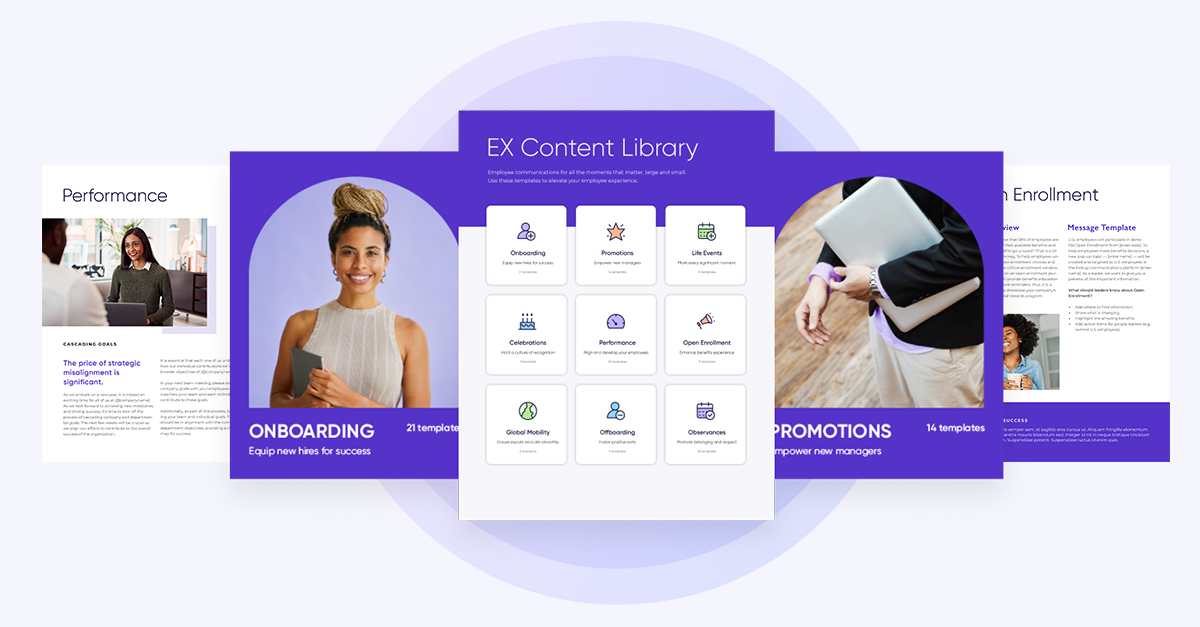There’s a reason you’ve been hearing a lot about the digital workspace lately. Researchers forecast that companies will spend nearly $35 – $80 billion on workplace technologies in the next few years. From our own research here at Firstup, we know 75 percent of organizations plan to increase spending specifically on workforce communications.
The digital workplace is not just a challenge for HR and IT to sort out in the next few years—it will require the entire company to adapt and shift.
- What is the digital workplace?
- Why is the digital workplace so important?
- How do you know when a digital workplace is working properly?
- Digital workplace best practices
- What will the digital workplace look like?
Defining the digital workplace
As with most new concepts, nailing down a single definition can be difficult, however, one of the first and simplest may also be the most accurate:
The digital workplace is the “virtual, digital equivalent of the physical workplace.” — Paul Miller
Building off of that, this new digital workplace platform requires tools and technologies to enable both its formation and effectiveness. These digital applications are fast becoming a crucial part of today’s workplace and can be seen everywhere in 2022 from HR applications to messaging apps, email to enterprise social media tools, internal communications apps, and even the employee intranet – to name a few. These tools build the infrastructure upon which the digital workplace framework lives.
These changes affect every worker including hybrid workers, remote workers, and frontline employees. For anyone that is working to improve, enhance, and optimize the employee experience via These changes affect every worker including hybrid workers, remote employees, and frontline employees. For anyone that is working to improve, enhance, and optimize the employee experience via communication and technology, the shift toward the digital workplace and the acceleration of its adoption has made this transformation extremely interesting.
And while most companies have worked to keep pace with digital workplace solutions, not every organization is as advanced, strategic, or aligned as it could be.
Why is the digital workplace so important?
What’s driving the growth of the digital workplace, and why now? You can trace it back to four core ways digital tools have transformed the way we live and work.
- Technology innovation: From mobile to machine learning to robots, digital tools and platforms eliminate mundane tasks and increase the speed that work gets done.
- Societal expectations: The way we communicate in our daily lives—from text to video— have given rise to a new category for employee communications applications which help companies connect to frontline and remote workers and improve the quality and speed of communications among teams.
- Shift to the Gig Economy: The move for many workers to freelance and the gig economy mean it’s harder than ever to hire and retain top talent. And thanks to digital tools that let us work from almost anywhere, at almost anytime, the workforce is now made up of gig workers, remote consultants or seasonal workers of diverse backgrounds.
- The “new normal”: During the COVID pandemic companies have had to ramp up the digital workplace at an incredible rate. Throughout 2021 the shift to work from home and the increased usage of video calls is making the digital workplace more crucial than ever.
Driving workplace alignment and simplifying the employee experience is a complex undertaking. It spans multiple categories like Gartner’s Market Guide for Employee Communications Applications and Intranet Packaged Solutions. (Report available to Gartner subscribers or get your free market guide for the modern intranet here).
Firstup is honored to be uniquely included as a Representative Vendor in the Market Guide for both employee communications and the modern intranet. According to the employee communications report, “The market for employee communications applications is set for growth and innovation as vendors enter the space from multiple adjacencies, creating a hypercompetitive environment. Application leaders of digital workplaces can use this guide to plan their investments in this rapidly evolving market.”
How do you know when a digital workplace is working properly?
When trying to understand if a digital workplace platform is successful, you can look for a few specific signs. Consider the following as hallmarks of a company that has invested in the right digital tools, aligned them successfully with business objectives and team workflows, and gotten the entire workforce to adopt and use those them routinely.
- Mundane tasks have either been eliminated or vastly reduced.
- Workplace efficiency has increased.
- Productivity has increased.
- Employee engagement levels are high.
- Workers are more connected, informed, and aligned with leadership.
- Remote workers are connected, engaged, and productive.
- Usage of digital workforce platforms and the cloud have created more agility and alignment.
- Employees are easily able to share and locate company data with consistent experiences across devices and locations.
- Attracting and retaining top talent has become easier.
The kind of technology you offer in your workplace impacts your employees’ ability to collaborate, communicate, and innovate; and organizations are beginning to spend more on their digital ecosystem.
Researchers forecast that companies will spend nearly $35 – $80 billion on digital workplace technologies in the next few years.
A Gartner study in the Harvard Business Review discovered that 87% of senior managers find achieving effective digital workplaces to now be a priority, with the majority saying it is a do-or-die imperative.
Spending on digital workplace solutions
Based on our own research at Firstup, we know 75% of organizations plan to increase spending specifically on workforce communications. Why do organizations care about improving their digital workplace? Organizations focused on enhancing the digital workplace see significant improvements in performance when measured against the performance of their competitors.
Digital workplaces play a large role in not only increasing employee productivity but also creating a positive employee experience.
Digital workplace best practices
Digital workplace transformations don’t happen overnight. These transformations are more like an organizational change than simply working with IT to update a system.
To lead a change in your organization and achieve digital workplace success, you need to create a strategy that works for the unique needs of your workforce. That means focusing on the people within your organization, aligning your vision with the entire organization with internal communications, assessing your current tech stack, and building a roadmap for success.

Best practice #1: Focus on what your workforce needs
Traditionally, the focus of most organizations has been on the consumer journey. But your employees are the driving force behind creating a positive consumer journey. Happy employees create happy customers, so your vision for your digital transformation should be aligned with what your workforce needs.
To understand what they need, you will need to gather feedback, assess challenges, and gain a deeper understanding of how your tech stack is used. Do so by asking the following questions.
- Is our workforce currently using so many technologies that they spend too much time working in tools rather than completing tasks? Are digital distractions in the office making it hard for employees to focus?
- Are our technology tools siloed?
- Do our tools work in harmony with employee workflows, or do our they create productivity disruptions?
- Does our organization have tools that address the different communication and collaboration needs (based on department, job function, and region) of employees?
The feedback you gather should include a diverse range of perspectives and seek to discover what technology and processes they value most. Feedback could be given in the form of surveys or interviews. By getting a holistic view of your current work environment, you will be able to assess what challenges and barriers your employees face and better meet employee expectations.
Best practice #2: Align your vision
After you have gotten feedback from employees, it’s time to bring in stakeholders from individual business units. Organizational change starts at the top but should be adopted and agreed upon by the entire workforce. People can be resistant to change, and if they don’t understand it, the initiatives could fail. Which is why internal communications is critical to your success.
By bringing in key leaders you can make sure that everyone is on board with the digital transformation and how it aligns to business processes. Stakeholders can help lead successful transformations by encouraging their business units to adopt new tools. Once you have aligned your vision with your entire organization, it will be much easier to implement new technology.
Best practice #3: Assess your current comms tech stack
Communication is key to a digital workplace initiative. You need to know what tools you already have, identify what tech is used the most, and how your employees use it. Identifying what features they rely upon or what digital technologies they see themselves using in the future is critical to leading a lasting transformation.
Once you have identified positive features, you can work on highlighting gaps in your stack. Gaps could include the growing need for a mobile app to reach remote workers, multilingual capabilities, or centralizing your internal communications. This will help you map solutions for your current tech needs so you can find the collaboration services needed to achieve success.
One of the largest barriers to a seamless digital experience is having siloed technology. If systems are not integrated, it can be difficult for workers to get the information they need in a timely manner. Having a single digital platform can immensely help to align your business applications.
Best practice #4: Develop a roadmap
After you have gathered employee feedback, gotten stakeholders onboard, and assessed your current tech stack, you are ready to create your roadmap. Create a roadmap timeline so you can help your business units and stakeholders understand the steps you need to take as an organization. Highlighting when phases will launch and who will be involved during various steps will help your organization be ready for change.
Identify how you will determine ROI; this will lend legitimacy to your strategy and give stakeholders a way to track success. Your roadmap’s endpoint should be a successful digital workplace solution that empowers your workforce and creates a positive employee experience.
What will the digital workforce look like?

We know digital workplaces are a growing market, which means there’s also a real need for companies to explore workforce communications tools. But there is still much work to do to educate companies on how such tools can help them.
The team at CMS Wire’s Digital Workplace Experience recently released its State of the Digital Workplace Report. This comprehensive report represents data from 700 executives.
The findings show:
- 56 percent of companies stated that the digital workplace was an extremely or very important priority.
- 72 percent of the companies report having an “established digital workplace strategy.”
- Only 11.3 percent of respondents reported having fully implemented the technology platforms need to support the initiative. Many are building a business case, researching vendors, or developing requirements.
- Digital workplace technology purchases are led primarily by IT (48 percent), C-suite leadership (42percent), and HR (23 percent). Line-of-business, corporate communications, digital groups, and others represent a less significant number of decision makers. But the ranking changed when survey respondents reported who was responsible as well for “employee experience”—HR teams took first place.
- Top priorities that respondents thought were most important include integrated digital workplace environments, digitization and process improvements, culture and change management.
Finally, survey takers reported that the number one metric used to measure the success of digital Finally, survey takers reported that the number one metric used to measure the success of digital workplace initiatives was that it raises employee engagement. (Though editors also reported that “measuring the digital workplace is at a nascent stage.”)
It’s exciting for Firstup to be a part of the growth of this market. We’ll continue our work helping our customers meet their technology needs, improve the employee experience, and measure workforce engagement and alignment.
Conclusion: Invest in your digital workplace strategy
Today, a digital workplace is absolutely essential to increasing employee engagement, generating optimum productivity, and keeping employees (and customers) happy. Your employees expect their workplaces to offer the same kind of sophisticated technology they use and enjoy in their personal lives. And quality internal communications are at the center.
The digital workplace enables a better digital employee experience. This can help you decrease churn rates and align your organization around strategic business objectives.
More companies are investing in their digital workplace and leading transformations to drive business growth. As the competition for talent increases and millennials make up more of the labor force, the More companies are investing in their digital workplace and leading transformations to drive business success. As the competition for talent increases and Gen Z make up more of the labor force, the importance of having an amazing digital suite has increased. The rise in frontline and hybrid workers has also put pressure on enterprises to have the communications tools needed to reach their entire organization.
In order to build an amazing digital workplace, your strategy needs to be employee-driven. If your technology doesn’t empower employees, it doesn’t matter how user-friendly that tech is.
Best practices for a successful digital transformation includes understanding the unique needs of various eBest practices for a successful digital transformation includes understanding the unique needs of various employees and stakeholders at your company. Align the entire enterprise with your change, by communicating effectively, to ensure successful rollouts and adoption. You will also need to identify gaps in your current tech stack and what collaboration tools you will need.
And finally, building a roadmap will help define your transformation and show ROI to your organization.
Learn more on how to take your organization into the future with a digital workplace. Schedule a demo today.
Gartner Disclaimer: Gartner does not endorse any vendor, product or service depicted in its research publications, and does not advise technology users to select only those vendors with the highest ratings or other designation. Gartner research publications consist of the opinions of Gartner’s research organization and should not be construed as statements of fact. Gartner disclaims all warranties, express or implied, with respect to this research, including any warranties of merchantability or fitness for a particular purpose.






